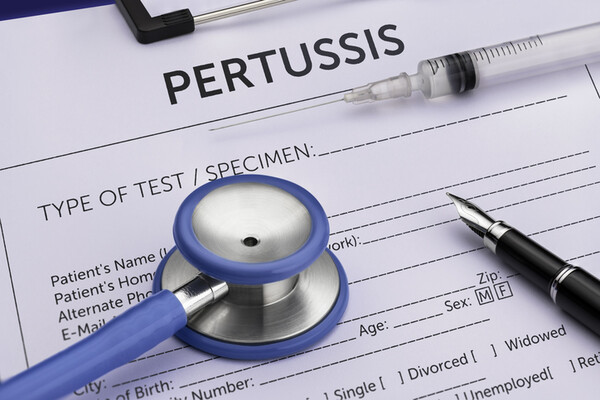Chung Hwa-ryung, Deputy Director of Diagnostic Test Division at Seoul Clinical Laboratories

Pertussis is spreading rapidly, especially among children and adolescents, amid growing anxiety among parents of young children.
According to the Korea Disease Control and Prevention Agency (KDCA) infectious disease statistics, the number of pertussis cases through week 42 (Oct. 20) was 27,005, 140 times higher than the average annual number of cases of 193 over the five years from 2019 to 2023.
The age breakdown shows that 89.5 percent of cases occur in the 5-19 age group, indicating that the pertussis epidemic is centered on children and adolescents.
100 days of coughing
Pertussis cases started to increase in mid-April this year, with a steep rise in June and a peak in July. Incidence declined in August before rebounding in October. Most patients coughed (99.4 percent), with paroxysmal coughs (21.5 percent) and whooping sounds (16.7 percent) identified in some cases.
Pertussis is a respiratory illness caused by infection with the bacterium Bordetella pertussis and spread by droplets (saliva) from an infected person. Once inside the body, the pertussis bacteria attach to cells in the airways, producing toxins and causing inflammation, which leads to coughing. The Korean name “baek-il-hae” (one hundred-day cough) comes from the fact that those infected can cough up to 100 days.

Pertussis is different from the common cold
Pertussis and the common cold are respiratory illnesses with similar symptoms. However, pertussis is characterized by a relatively long illness duration and different symptom stages.
The first stage of the disease includes a runny nose, sneezing, and a mild cough that lasts about one to two weeks. This is when the disease is most contagious, but it's easy to mistake it for the common cold. One of the characteristics that distinguishes it from the common cold is that pertussis is often accompanied by a cough without a fever, so if you have a cough without a fever for five to seven days, you should consult a doctor for a differential diagnosis of pertussis.
The intermediate stage lasts for four weeks or more. It is characterized by a severe cough that can be accompanied by a high-pitched whooping sound when inhaling deeply. Children and babies may turn blue in the face, vomit, or become exhausted while coughing. They may also have trouble sleeping, especially at night, due to coughing.
Finally, there is a two- to three-week recovery period, during which the cough gradually decreases and recovers from weeks to months. However, the cough may not disappear entirely. It may return, so monitoring your physical condition and visiting a healthcare provider immediately if the cough returns is essential.
A healthcare provider will take a sample from the nasopharynx through the patient's nose and perform a Bordetella pertussis PCR test. This test detects pertussis by polymerase chain reaction (PCR) amplification of DNA specific to pertussis bacteria. If pertussis is diagnosed, it is treated with antibiotics. Isolation is required for five days after starting treatment. During this time, the patient should increase the humidity in the room and avoid sudden temperature changes and dust.
Prevention is key
The best way to prevent pertussis is through timely immunization. There are two vaccines -- DTaP and Tdap.
The DTaP vaccine is given to infants and young children, starting at two months and followed by one dose at four and six months. Additional doses are required between 15 and 18 months and between four and six years of age.
Tdap vaccine is for children seven years or older, adolescents, and adults. It contains less pertussis antigen than the DTaP vaccine. Adolescents need one dose between 11 and 12, and adults who have never received Tdap should also receive one. Mothers, infant caregivers, and others who work closely with young children should be vaccinated before they have contact with infants and young children. Pregnant women are recommended to receive one dose between 27 and 36 weeks of pregnancy, and if they miss a dose, they should receive a dose as soon as possible after delivery.
Although the number of whooping cough cases in Korea is increasing, most cases are not severe due to the country's high immunization rate. Prevention is the best cure, so get vaccinated on time and follow daily preventive measures to reduce worry and protect your health.
Five tips to prevent a whooping cough
ㆍ Practice good personal hygiene
Wash your hands frequently with soap and avoid touching your nose and mouth.
ㆍPractice cough etiquette
Cough and sneeze with a tissue or the inside of your elbow. Throw away used tissues immediately and wash your hands.
ㆍWear a mask
Wear a mask in crowded areas to help prevent transmission.
ㆍ Manage your surroundings
Disinfect frequently touched objects and surfaces and keep the air clean by ventilating frequently.
ㆍ Take care of your health
Sleep well, eat a balanced diet, and exercise regularly to boost your immune system.

